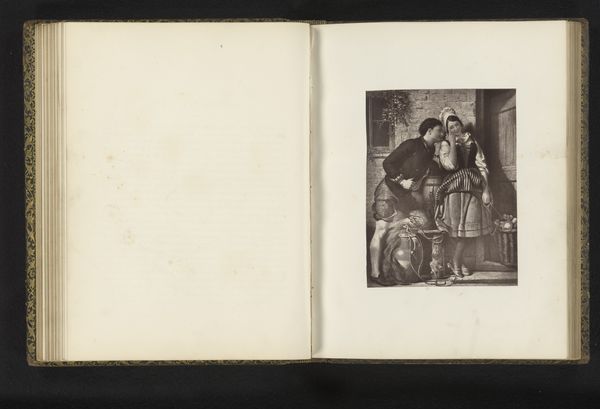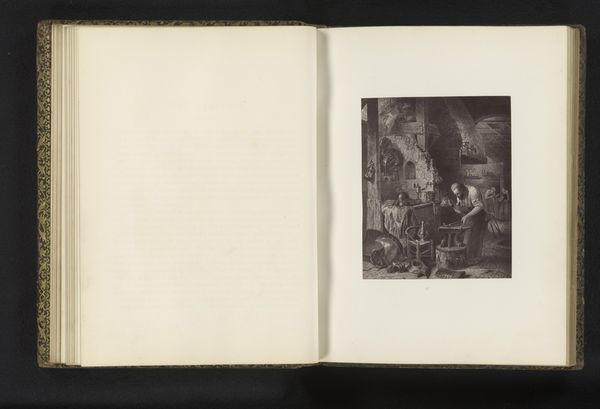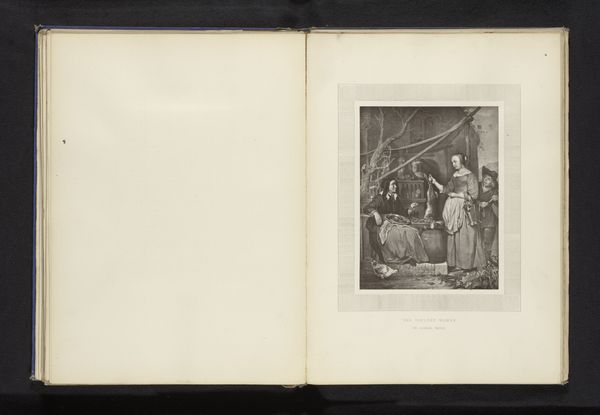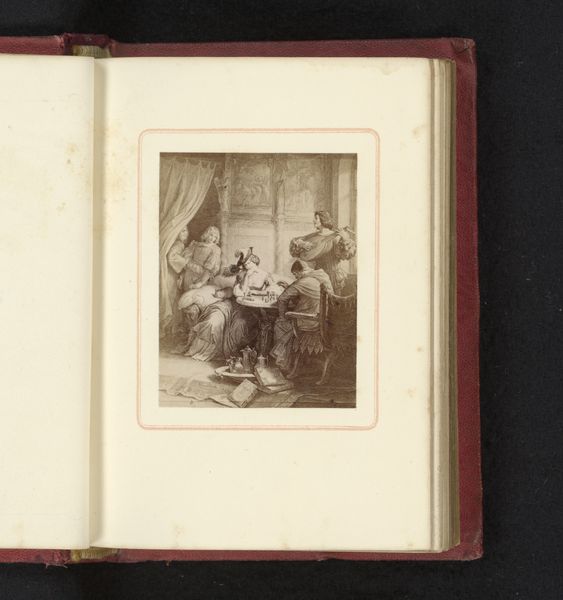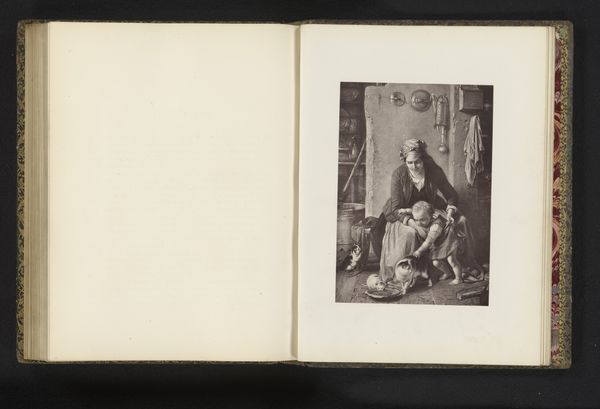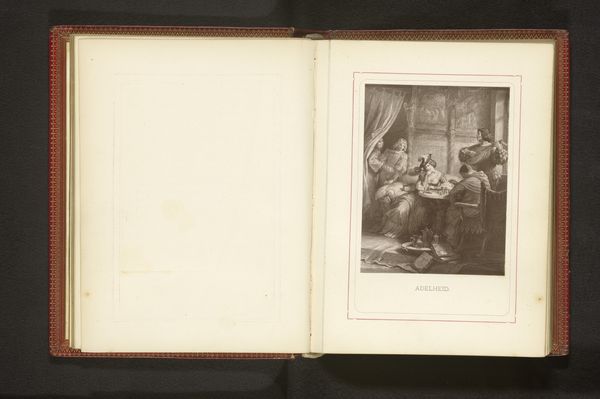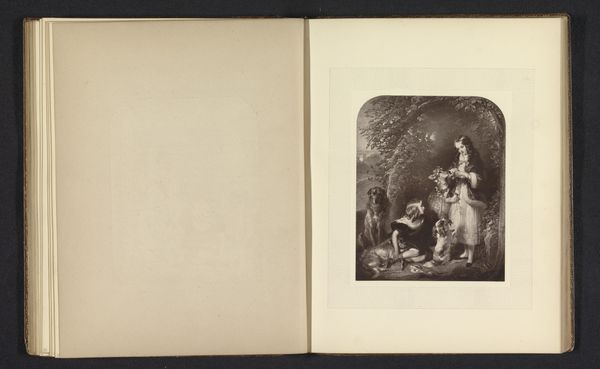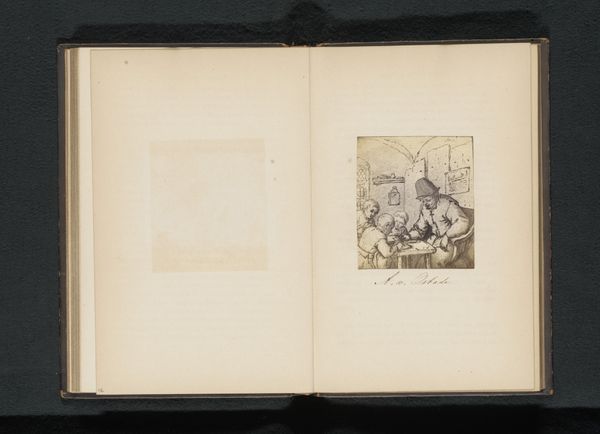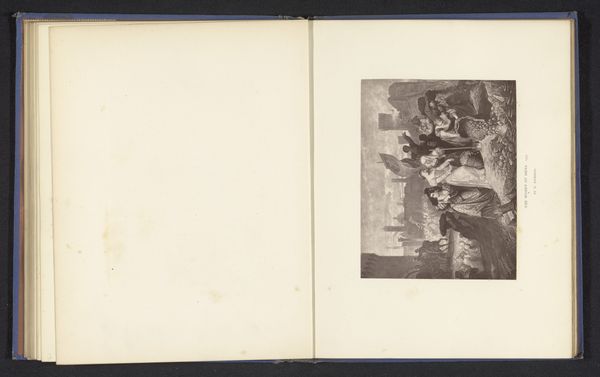
Fotoreproductie van een gravure naar het schilderij The village rose door Thomas Brooks before 1871
0:00
0:00
Dimensions: height 156 mm, width 120 mm
Copyright: Rijks Museum: Open Domain
Curator: This etching, dating from before 1871, is a photoreproduction of an engraving of the painting “The Village Rose” by Thomas Brooks, based on a portrait by Godfrey Wordsworth Turner. It seems fitting to reflect upon the romantic themes presented to us within. Editor: It's rather…charming. The kind of sweetness that makes you want to roll your eyes but also sort of… sigh dreamily? The soft light filtering through the trees definitely sets a mood, doesn't it? What symbols or meanings strike you when you see the work, considering this cultural lens? Curator: Well, it’s titled “The Village Rose.” That tells me a lot. The rose is practically synonymous with romantic love, especially when placed, as it is here, in a village setting implying idyllic innocence. Consider their positioning – she leans ever so slightly upon his arm, a gesture of tentative trust perhaps? A garden path opens behind them leading back towards a brighter space, which represents their journey in life. The landscape speaks, not of rugged individualism or urban strife, but of gentle nurture and budding sentiment. Editor: Absolutely, I agree; the visual language is really fascinating. Note that while they’re linked physically, she has one hand free and unlinked, suggesting some freedom and a bit of emotional complexity. He holds some simple flowers for her. Those blossoms speak to love, of course, but consider also how fleeting they are. What we see in a seemingly sweet genre-painting speaks of the transient nature of youth and beauty, as well as the very delicate thread that true romance is built on. It hints to me at unspoken fragility in the promises made between lovers and within social hierarchies. Curator: It’s true that we find potent commentary. The clothing of these characters suggests an air of cultivated taste. They're clearly a step above mere peasants, a critical indicator for interpreting their social role and significance. The image is also a photo-reproduction, an attempt to make the original accessible and commonplace by its means of production. Editor: What really stays with me is that quiet tension between idealized romance and the whisper of reality; it gives the whole thing a real edge. Makes you wonder about what happened after they wandered down that garden path, eh? It’s as if both artists are inviting viewers to consider the interplay of dreams, truth, tradition, and beauty... Curator: And isn't that what we're always striving for? Truth, after all, is as good as a rose.
Comments
No comments
Be the first to comment and join the conversation on the ultimate creative platform.
